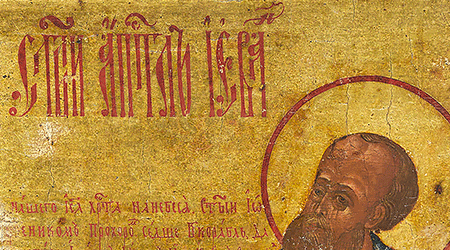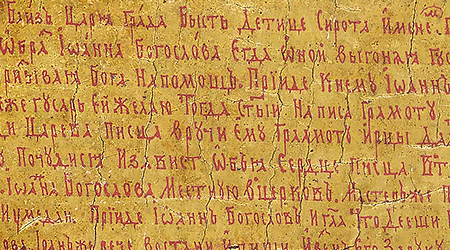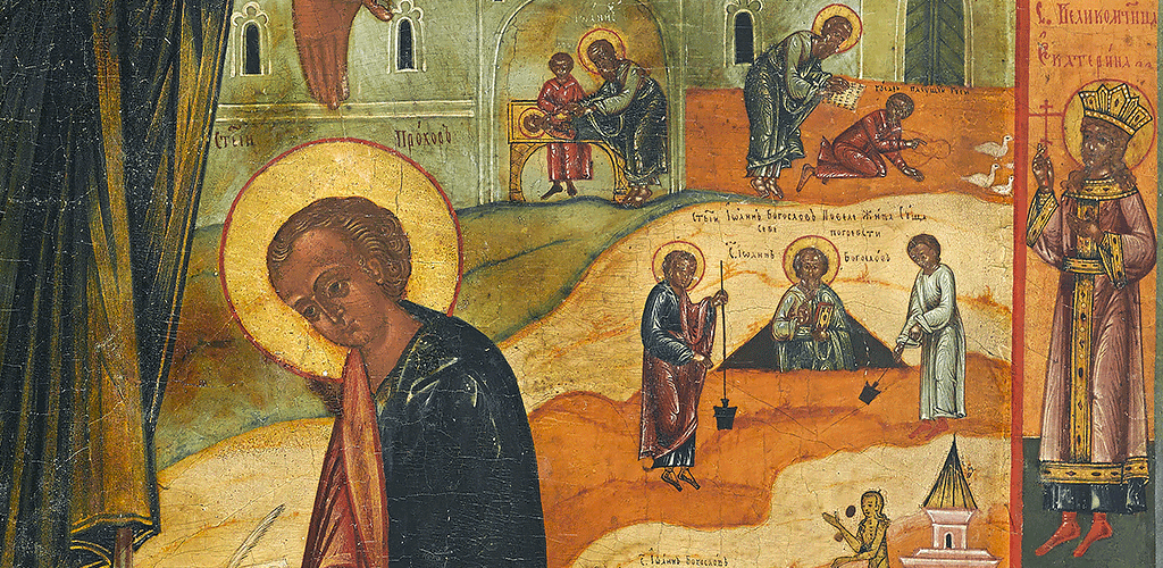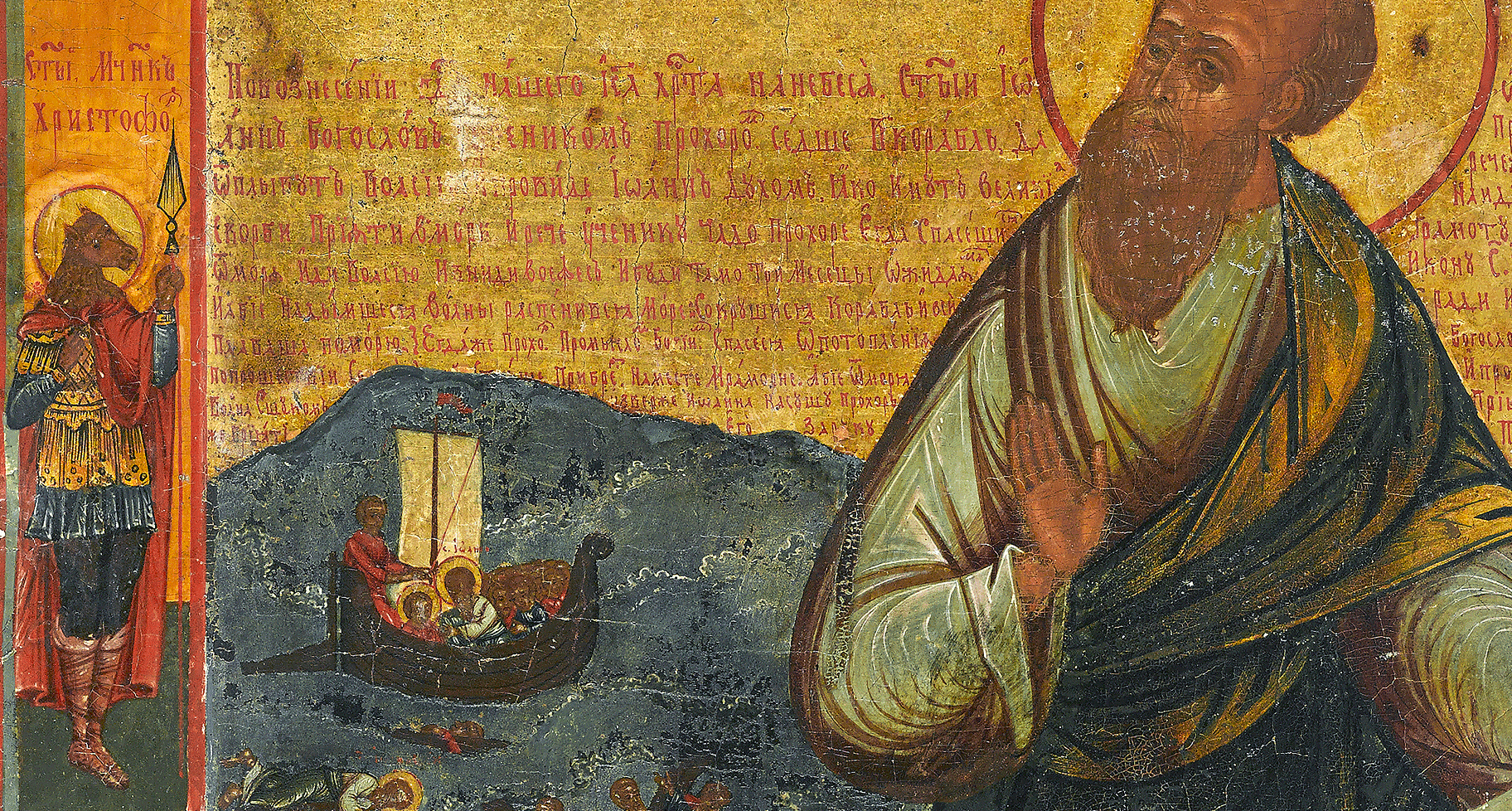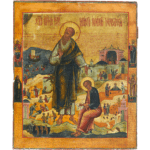Traditionally painted against a gold background, the icon portrays St.John the Theologian with his disciple Prokhor on the isle of Patmos. In the central image, St.John is shown standing, his head turned upwards as if listening to a voice from heaven, a part of the celestial sphere is shown in the top left corner with rays coming forth from it. The young scribe to John’s right is Prokhor, one of the seven deacons. He is shown writing the first words of the Gospel of St.John: ‘In the beginning was the Word, and the Word was God’ (John 1:1). Numerous smaller scenes surround this central image: they depict key events from St.John’s life. The background and borders of the icon are inscribed with a text in Old Slavonic; the borders are painted with four family saints: St.Christopher and St.Alexander Svirsky on the left; and St.Martyr Paraskeva and St.Martyr Catherine on the right.
The Apostle John the Theologian is known as one of the first and closest disciples of Christ. Christian tradition ascribes him the authorship of several New Testament works, such as the Gospel of John, the Epistles of John the Apostle and the Book of Revelation.
According to many accounts, John the Theologian was exiled to Patmos during the reign of Emperor Domitian. The apocryphal Acts of John describing the numerous miracles performed by John culminates in a story of his death in Ephesus on a Sunday day after a sermon, prayer and the Eucharist.
St.John is often depicted dictating a Gospel to Prokhor. The iconography is based on the episode from the Travels of John the Theologian. After a few days spent in private devotion, the Apostle was bestowed with the Divine revelation that appeared to him as lightning and thunder; putting Prokhor on the land to his right, he dictated him the Gospel standing and staring the sky. The earliest depictions of this episode are found in two Gospels dated to the late 10th and the early 11th centuries (kept in Paris and Athos, respectively). Since the 15th century, this iconographic type gained a broad circulation in Russian miniatures (the Hitrovo Gospel, circa 1400, The Russian State Library; The Morozov Gospel from the Assumption Cathedral of the Moscow Kremlin, the 1410s, The State Museum of the Moscow Kremlin).
